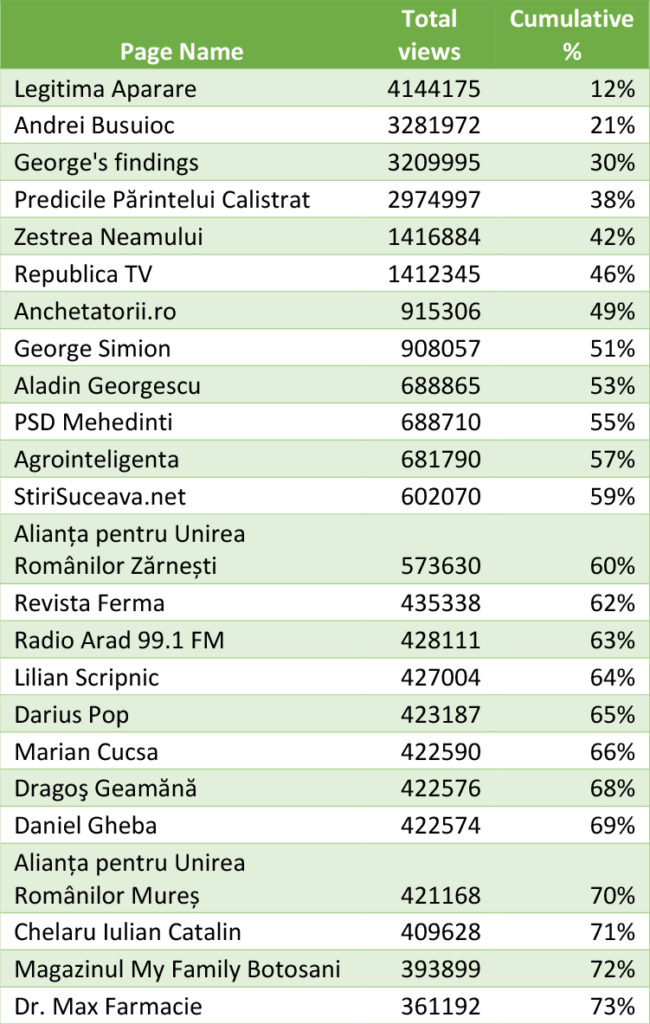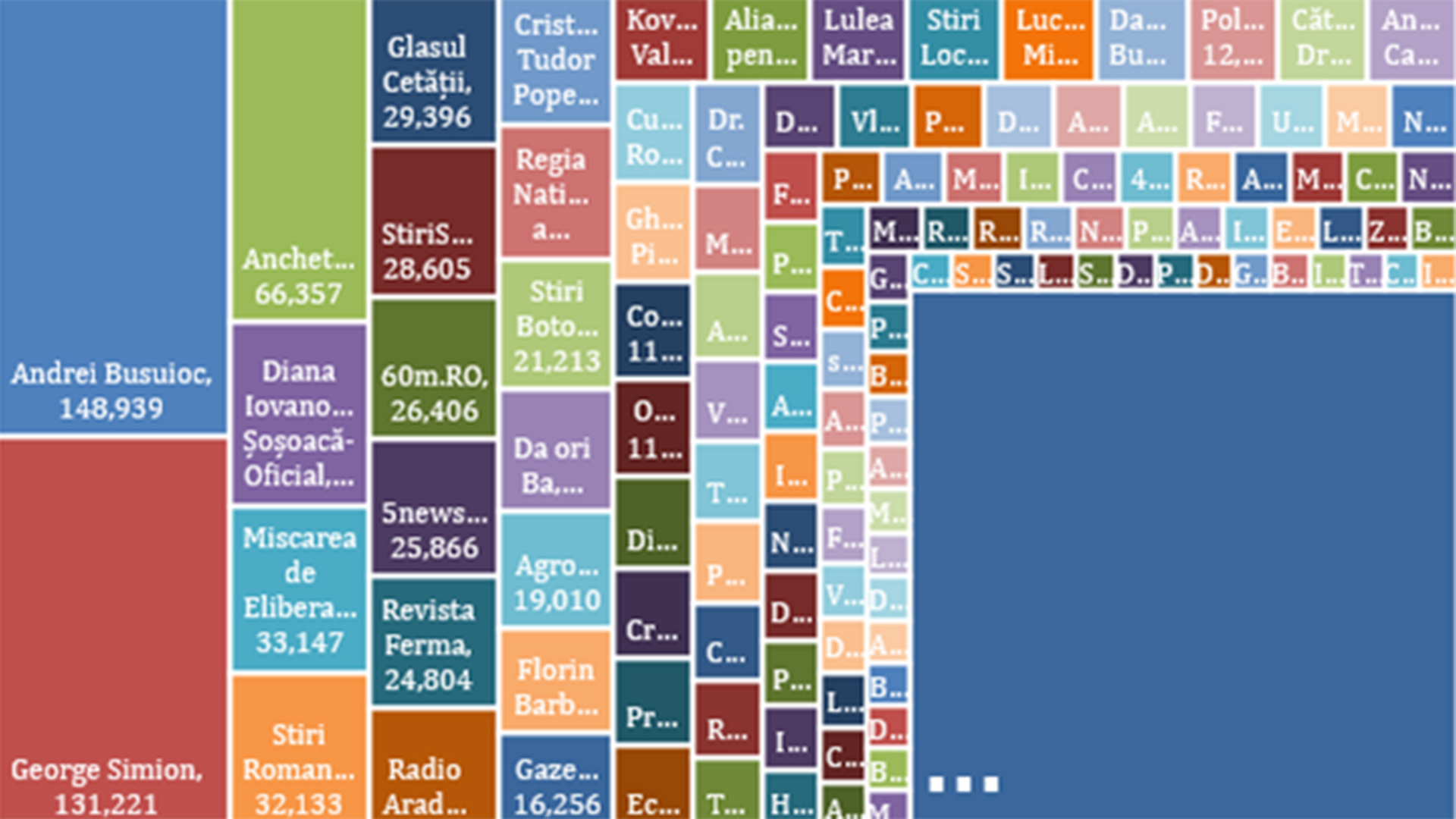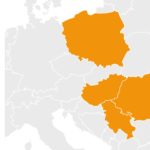February 2024
Context
On January 10th, 2024, Romanian farmers and hauliers engaged in a nationwide protest against the government’s transport and agricultural policies, briefly blocking traffic at border crossings and several cities, including the frontier with Ukraine and the capital’s ring road.
Demonstrations in Romania unfolded on the background of similar protests taking place in other EU member states, including Poland, Germany and France, and reflecting overlapping grievances of European farmers and hauliers impacted by the effects of the war in Ukraine.
After initial rounds of negotiation with officials failed, a list of 76 demands was launched publicly, including tax removals, lower insurance rates, increased subsidies, compensation for “losses” related to the support for Ukraine, as well as political changes such as reducing the number of MPs[1].
The protests continued through early February, when an agreement was reached with Prime Minister Marcel Ciolacu.
Far-right pro-Russian voices from the AUR and SOS parties repeatedly tried to become part of the protests but generally failed[2]. It should be noted that “farmers” appear to be small or medium agribusiness[3] rather than family farmers and these businesses have a vested interest in receiving subsidies from the EU; this may have played a role in rejecting advances from the far-right.
Main findings
The protests of farmers and transporters highlighted Romania’s vulnerabilities in that mainstream outlets and political elites failed to communicate with citizens on topics exploited by the far right.
- Monitoring conducted on Facebook, the
main mainstream social media channel, showed that both politicians from major
parties and traditional media channels have struggled to become a significant
part of the public discussion.
- Noteworthy exceptions include Social Democratic PM Marcel Ciolacu, whose positions were sponsored by the local organisation PSD Mehedinți, and some local and niche media actors.
- Fortunately, societal resilience has been strong enough this time
- Both the hauliers’ organisations and the farmers’ groups have avoided associating with extremist elements, refusing to extend their protests to a broader anti-Ukraine agenda.
- The general population was mostly interested in video content, and they predominantly viewed video content produced by far-right outlets; however, the most popular videos were those that simply showed tractors moving, thus satisfying a legitimate information need.
- Also, in the public debate on Facebook, the topic of Ukraine had a very low representation, with only a minority of posts referring to the country in the context of the protests.
It is interesting to observe how the pro-Russian far-right adapted, trying to appear neutral and to dominate the informational space, at least on Facebook, in a context where the general population shows little sympathy for Russia or hostility towards Ukraine.
Thinking ahead to the 2024 election year, the inability of politicians and media channels to influence the public agenda, combined with the efforts of the far right to present a seemingly mainstream image, represents a major vulnerability.
The fact that the protests have not degenerated should not make us too optimistic. As an international proverb goes, “the pitcher often goes to the well, but is broken at last.”
Russian direct influence
The Russian Embassy did not proactively engage in propaganda but commented negatively on some statements made by Pavel Popescu, president of the National Authority for Administration and Regulation in Communications, trying to pose as a victim[4]:
Se pare că aceste forțe malefice [actori externi] ar fi cheltuit aproape 300 de milioane de euro pentru a dezinforma poporul român în anul electoral 2020. Ei bine, potrivit oficialului, nici cu protestele fermierilor lucrurile nu ar fi prea clare… Bineînțeles, nu sunt prezentate fapte care să confirme aceste concluzii. Într-adevăr, de ce să se mai chinuie cu căutarea dovezilor? Afirmația este absolut în spiritul actualei paradigme europene, care demonizează Rusia și o vede ca sursă a tuturor problemelor continentului.
(Apparently, these evil forces [external actors] would have spent almost 300 million euros to misinform the Romanian people in the 2020 election year. Well, according to the official, even with the farmers’ protests things would not be too clear… Of course, no facts are presented to confirm these conclusions. Indeed, why bother looking for evidence? The claim is absolutely in the spirit of the current European paradigm, which demonises Russia and sees it as the source of all the continent’s problems.)
On the other hand, În Prima linie, an online publication that sports a quote from Vladimir Putin as its motto[5] has written articles focusing on farmers from Moldova[6], Poland[7] or Hungary[8], trying to promote the image of a pan-European movement.
The outlet uncritically published the position of Maria Zaharova (Russian MFA spokesperson) that the European Commission and Ursula von der Leyen personally are responsible for the protests.
Maria Zaharova, purtătorul de cuvânt al Ministerului rus de Externe, a explicat că motivele grevelor sunt tocmai politica lipsită de viziune a Comisiei Europene condusă de Ursula von der Leyen, care a dus la creșterea costurilor de producție în cadrul Uniunii Europene și a creat condițiile ideale pentru o concurență neloială pe piața agricolă comunitară.
Maria Zaharova, spokesperson for the Russian Foreign Ministry, explained that the reasons for the strikes are precisely the short-sighted policy of the European Commission led by Ursula von der Leyen, which has increased production costs within the European Union and created the ideal conditions for unfair competition on the EU agricultural market.
Ukraine was not a theme of public debate
Protests were nominally caused by the perceived unfair competition of Ukraine’s grain and the protesters did at some point block the Siret Customs (connecting Ukraine to Romania). Nevertheless, the movement did not become an anti-Ukraine protest.
On Facebook, between the 12th and the 23rd of January, discussions about the protests gathered more than a million interactions (details below). In comparison, discussions about the protests that also referred to Ukraine only gathered 70.000 interactions. Considering that many of the posts contained mostly factual information, we can safely say that the effort of the pro-Russian far-right to confiscate the protest and turn it into a general anti-Ukraine action failed.
“Superstar” video posts got the attention. Mainstream politicians were absent
On the general Facebook population, video views on the topic reached more than 36 million between the 12th and 23rd of January.The top 10 most viewed posters gathered >50% of the views while the top 25 gathered > 75% of the views.

The top performers tend to be pro-Russian and/or far-right, with occasional tabloid nuances. George Simion, president of the far-right AUR party, gathered 2% of the views[9] but the surprise was Andrei Busuioc, AUR senator of Vaslui, with ~10% of the total views (>3 million)
From the mainstream organisations, only PSD Mehedinți has caught on. A more careful look shows the page (which has very low natural engagement) to be a channel through which online ad money is funnelled[10]. The most successful clip is a declaration by Marcel Ciolacu presenting several official announcements[11]
Despite being promoted by the far-right, the most successful videos are generally simple films of columns of tractors going to protests. They have likely been watched by many as just a source of information and their content is not outright radical.
Low impact of mainstream media
Given the topic, the most successful posts are videos. As seen in the previous section such videos tend to come from something other than mainstream sources. We also looked at post interactions, to see whether the situation had changed. Again, central, generalist mainstream media is conspicuously absent. Smaller, local information media are more present but oftentimes with articles that “free-ride” the topic: feel-good articles about farmers that have a good impact but are not directly connected to the protests.[12]

.
Who are some of the most popular voices in the context of the protests
Legitima Apărare (translating into “legitimate self-defence”) is a right-wing radical-extremist page, with over 170.000 followers, regularly posting anti-system, anti-EU/anti-NATO messages, conspiracy theories and ultranationalist content. Members of this community participate in anti-governmental protests and nationalist demonstrations, posting footage online, including the farmers’ protests, which they promoted and actively engaged in.
Andrei Busuioc is an AUR senator since 2020. Throughout the protests, Busuioc shared various videos and images of the farmers’ movements in several cities, with some of his posts reaching significant audiences on Facebook, including a video of tractors travelling on a main road with a nationalist unifying message on the screen, which has over 70.000 likes and over 9400 shares. In 2021, he was investigated in a drug trafficking case and in 2015 he was arrested on similar charges in the Republic of Moldova.
George’s findings is a Facebook page with over 18.000 followers, posting diverse content – from entertainment videos and memes, to political messages – which shared a lot of content from the farmers’ protests, mainly taken from TikTok and other pages, calling for others to join and spreading nationalist messages, as well as disinformation.
Predicile Părintelui Calistrat (translating into “Father Calistrat’s preachings”) is a page dedicated to an Orthodox priest located in the city of Iași, Moldova region, which mainly posts quotes and footage of Calistrat’s, but also shared content of the farmers’ protests along with an open letter “signed” by Calistrat himself, supporting and legitimating their cause by integrating religious, ultranationalist, anti-migration, anti-EU/NATO and anti-governmental messages. In late 2022, the priest was filmed physically and verbally assaulting a woman during a sermon, an incident for which he was investigated by the police, but for which he refused to apologise, further denigrating his victim in the media.
Zestrea
Neamului (translating into “nations’ dowry/legacy”) is a nationalist page with
over 93.000 followers, mainly posting Romanian folklore imagery and historical
content. During the January protests, they shared videos of farmers and
tractors, adding the message “real men don’t stay at home” to one of them.
[1] https://www.g4media.ro/lista-cu-76-de-revendicari-ale-fermierilor-si-transportatorilor-care-continua-protestele-de-la-solicitari-privind-activitatea-lor-pana-la-revendicari-politice-nu-este-clar-cati-protestatari-sustin.html
[2] https://www.romania-insider.com/farmers-protest-negotiations-romania-january-2024
[3] See here the representatives that signed an agreement with the Government. Some of the organisations explicitly include agri-industry members.
[4] https://www.facebook.com/100064754076962/posts/772281624940300
[5] “Uneori, este necesar sa ramai singur pentru a dovedi ca ai dreptate” – “Sometimes, it is necessary to remain alone to prove you are right”
[6] https://inprimalinie.wordpress.com/2024/01/24/tensiuni-crescute-in-republica-moldova-fermierii-acuza-autoritatile-ca-lucreaza-pentru-interesele-ucrainei-in-materie-de-exporturi-de-cereale/
[7] https://inprimalinie.wordpress.com/2023/04/01/revolta-in-polonia-fermierii-protesteaza-contra-cerealelor-din-ucraina-video/
[8] https://inprimalinie.wordpress.com/2024/02/02/fermierii-maghiari-incep-protestele/
[9] The percent reflects videos that are somehow tagged in relation with the protests
[10] https://www.facebook.com/ads/library/?active_status=all&ad_type=all&country=ALL&view_all_page_id=487181618120455&search_type=page&media_type=all The ads seem to have
[11] https://www.facebook.com/CiolacuMarcel/posts/pfbid02mYnCgYUsTdqxXB18BFASMw2qSeEZVfDjbSz73gaewr7E7HdpF39BufZDvMgWvQvul
[12] See example here: https://www.facebook.com/100064031737400/posts/791100213034363





